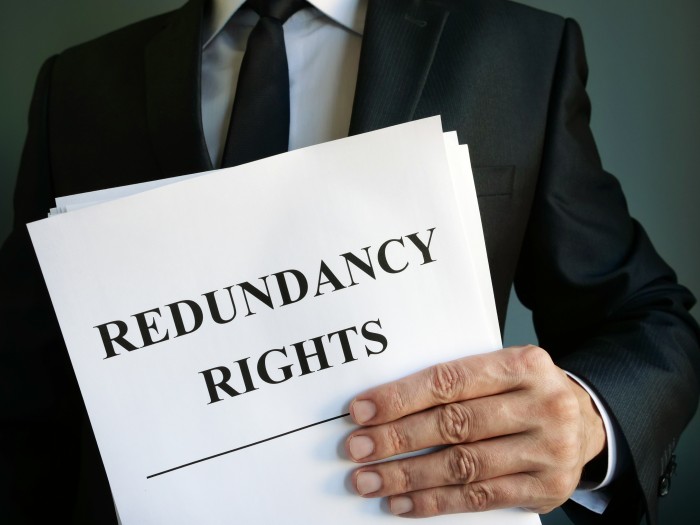
Employment Law Redundancy: Key Insights for Employers
Introduction to Redundancy in UK Employment Law
Employers are often concerned about embarking on the process of making employees redundant. However, with the right knowledge, it’s possible to navigate the complex area of employment law redundancy with confidence.
Brief Overview of What Redundancy Is
Redundancy arises when an employee’s position is no longer required. It might be due to changes in business needs, technological advancements, or economic downturns. It’s essential to remember that redundancy is not a reflection of an employee’s performance or abilities.
The Importance of Understanding Employment Law Redundancy for Employers, Business Owners, and Managers
Understanding redundancy, from both a legal and ethical perspective, is paramount for various reasons:
- It ensures compliance with the law, avoiding hefty penalties.
- It maintains a company’s reputation and integrity in the market.
- It fosters trust and transparency with employees.
- It assists in making informed decisions that benefit both the company and its employees.
- It helps avoid costly legal disputes or employment tribunals.
Knowledge of employment law redundancy isn’t just about adhering to regulations. It’s about ensuring the well-being of your workforce even when making tough decisions. As an experienced employment lawyer, I’ve seen businesses flourish when they handle redundancy processes transparently and ethically.
In the dynamic business environment of the UK, change is inevitable. But, with the right insights and guidance, these changes can be managed in a manner that upholds both the law and the company’s values. That’s why I’m committed to providing high-quality advice on employment law redundancy and related matters. It’s essential to be proactive, informed, and prepared.
Beginning employment law redundancy might seem daunting initially. However, with the right resources and support, you can confidently steer your business through the challenges. Your employees are your most valuable asset. Treating them with fairness and respect, even during difficult times, will always be the best course of action.
The Legal Framework: Key Provisions and Statutes for Employment Law Redundancy
As an employer in the UK, understanding the legal landscape surrounding redundancy employment law is key. This knowledge ensures that you act not only within the bounds of the law but also uphold the highest standards of fairness and transparency.
The Employment Rights Act 1996 and its Relevance to Employment Law Redundancy
The Employment Rights Act 1996 stands as a cornerstone when discussing redundancy. This legislation sets out the rights of employees and the obligations of employers. Redundancy, as defined by this Act, encompasses scenarios where an employee’s job ceases to exist. In such cases, an employer must ensure that any redundancy is genuine and that they’ve adhered to the correct procedures. Failing to do so might result in an unfair dismissal claim.
Other Pertinent Regulations and Legislation Guiding the Redundancy Process
Beyond the Employment Rights Act 1996, several other statutes and regulations impact the redundancy process. Among them are:
Trade Union and Labour Relations (Consolidation) Act 1992
This Act stipulates the duty to inform and consult recognised trade unions in redundancy situations. It’s particularly significant when contemplating collective redundancies.
Fixed-term Employees (Prevention of Less Favourable Treatment) Regulations 2002
These regulations ensure that fixed-term employees receive equal treatment compared to permanent employees. Thus, in redundancy scenarios, you can’t discriminate against them based on their contract type.
Employment Equality (Age) Regulations 2006
Age discrimination is a critical concern in redundancy situations. These regulations ensure that any selection criteria used doesn’t unfairly disadvantage employees because of their age. For instance, using the ‘last in, first out’ approach can sometimes lead to indirect age discrimination.
Navigating through these legal waters can feel overwhelming. Still, a solid grasp of employment law redundancy is non-negotiable for any responsible employer. By abiding by these laws and regulations, you not only protect your business from potential legal pitfalls but also foster trust with your workforce.
It’s essential to remain updated as employment laws are frequently amended. Regularly consulting with legal professionals, attending workshops, or reading trusted publications can make a significant difference. Remember, understanding and implementing the correct redundancy procedures demonstrates commitment, not only to your business’s success but also to the well-being of your employees.
Essential Steps in a Fair Redundancy Process
In the area of employment law redundancy, a fair and transparent process is not only legally mandated but is also a hallmark of ethical business practice. As an employer, understanding and implementing these steps can protect your company from potential legal disputes and maintain your reputation in the industry.
The Importance of Clear Business Reasons
Initiating a redundancy procedure should always be rooted in genuine business reasons. Perhaps there’s a need to reduce costs, a specific job role has become obsolete, or there’s a significant operational change. Whatever the reason, it should be clear, justified, and documented.
Consulting with Employees and Representatives: When and How?
Consultation is a pivotal aspect of the redundancy process. If you’re contemplating making 20 or more employees redundant within 90 days, a collective consultation is necessary. This involves discussing the reasons for redundancies, exploring alternatives, and laying out the proposed method of selecting employees for redundancy. Regular, open communication with affected employees or their representatives minimises misunderstandings and fosters a sense of fairness. See also ACAS redundancy advice for employers
The Selection Criteria: Ensuring they are Objective and Non-discriminatory
When identifying who to make redundant, your chosen criteria must be objective and free from discrimination. Examples of objective criteria include:
- Skills and qualifications
- Attendance record (excluding disability-related absences)
- Work performance
- Disciplinary record
It’s crucial to steer clear of criteria that could indirectly discriminate such as length of service, which might disadvantage younger employees.
Considering Alternative Roles and Retraining Opportunities
Before making a final redundancy decision, explore all possibilities of offering alternative roles within the company. If a suitable alternative is available, it’s your duty to present this to the affected employee. Sometimes, minor retraining can enable an employee to take on a different role, saving both their job and the costs associated with redundancy.
Conducting a redundancy process requires a careful balance between business needs and the rights of your employees. By adhering to these steps and grounding every decision in the principles of fairness and transparency, you solidify your commitment to both your business’s future and the well-being of your workforce in the context of employment law redundancy.
Common Pitfalls with Employment Law Redundancy and How to Avoid Them
Employment law redundancy requires vigilance. Despite the best intentions, some employers inadvertently fall into traps that can lead to costly legal disputes and reputational damage. By being aware of these pitfalls and learning how to sidestep them, you can protect your business and foster a sense of trust with your workforce.
Mistakes in the Consultation Process
One of the most common errors is overlooking the consultation process’s importance. Redundancy is not a unilateral decision; employees must be actively involved. To avoid this pitfall:
- Initiate consultations early, allowing adequate time for feedback and alternative proposals.
- Provide clear reasons for proposed redundancies.
- Engage genuinely with employees’ suggestions and concerns.
Overlooking Suitable Alternative Employment
Before finalising a redundancy, it’s imperative to consider any alternative roles within the organisation. Failing to do so can be legally contentious. Thus, always:
- Review all vacancies or soon-to-be-vacant positions.
- Assess the feasibility of retraining employees for different roles.
- Discuss potential roles with affected employees and consider their feedback.
Discrimination Claims Arising from Flawed Selection Criteria
Another common pitfall is using discriminatory or subjective selection criteria. To steer clear of this, ensure your criteria are objective, consistently applied, and do not disadvantage any particular group. Regularly review and update your criteria.
The Importance of Clear Communication Throughout the Process
Unclear or infrequent communication can lead to misunderstandings, mistrust and heightened anxiety among employees. Maintain open channels, update affected parties regularly and make yourself available for questions. Transparent communication not only alleviates concerns but also reinforces your commitment to fairness.
Mastering the redundancy process in the area of employment law redundancy is about more than legal compliance. It’s about showing respect and empathy towards those affected. By being aware of these pitfalls and actively working to prevent them, you fortify your business’s legal and ethical standing, ensuring smoother transitions during challenging times.
The Importance of Documentation in Redundancy Proceedings
During the process of employment law redundancy, the adage “if it wasn’t documented, it didn’t happen” holds particularly true. Proper documentation serves as a tangible record of every decision, conversation and action taken during the redundancy process. It’s an invaluable asset for employers, ensuring compliance with the law and providing protection against potential legal claims.
The Role of Documentation in Demonstrating Fairness
When an employer is faced with an unfair dismissal claim, one of the primary defences is showcasing that the redundancy was genuine and the process was fair. Without proper documentation, this becomes a challenging task. Documenting each step, from the initial decision to make redundancies to the final discussions with affected employees, serves as evidence of a company’s commitment to fairness and transparency.
Key Documents Employers Should Maintain
Several crucial documents should be kept throughout the redundancy process. The initial business case for redundancies, detailing the reasons for the decision, stands as the foundational document. Beyond that, records of consultations with employees, notes from meetings and all correspondence related to the redundancy play pivotal roles in establishing a robust paper trail.
Duration and Data Protection Concerns
While it’s essential to maintain redundancy-related records, it’s equally crucial to be aware of data protection regulations. The General Data Protection Regulation (GDPR) and the UK’s Data Protection Act 2018 mandate how personal data should be handled, stored and retained. Typically, redundancy documents should be kept for a minimum of six years. However, always ensure that you’re managing them in a way that respects employees’ privacy rights and complies with data protection laws.
Accessibility and Storage of Redundancy Documentation
The way you store these documents is equally important. They should be easily accessible but kept in a secure location or digital platform. Proper categorisation, clear labelling, and a logical storage structure will aid in retrieving them when needed, making it easier to address any concerns or legal challenges.
In the realm of employment law redundancy, every step and decision must be grounded in both legal compliance and an ethical approach. Comprehensive documentation achieves this twofold goal: it offers legal protection for employers while simultaneously demonstrating a genuine commitment to treating employees fairly. Remember, a well-documented redundancy process is not just about ticking boxes; it’s a testament to a company’s integrity and responsibility.
Call John Bloor at EBS Law on 01625 87 4400 if you are an employer and need free Employment Law Advice.


